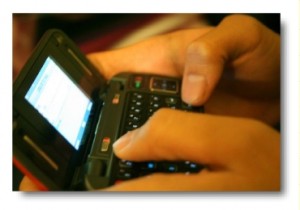The next great opportunity to drive customer closeness is optimizing the recognition of your most loyal customers. We live in the "age of engage", so success depends on developing an individualized relationship with important upper tier clients and an environment that encourages outstanding performance for this key subgroup of very committed customers.
Ask yourself this simple question: What does your organization have that your competitors can match? The list is long—too long to feel comfortable with. It includes price, product features, marketing, and dozens of other tangible items. Incentive rewards programs and loyalty cards that you and your competitors use all start to look the same in many cases.
Then ask this next question: Where can our organization excel that will be really difficult for our competitors to copy? A knowledge base and expertise that newcomers bring to the market cannot match what you have as an incumbent and customers recognize that. This expertise should be nurtured into a pro-active culture in which employees develop a passion to outperform and delight their most important customers. This is significantly different than a "frequent flyer" number in a computer and it goes far beyond a willingness to simply fix problems as they occur (which you should do for all customers). It is a behavior to treat customers in a one-on-one manner, such that they can't wait to tell others how great your company is.
High-level users expect more than points and rewards. They expect privilege. They expect to be welcomed back as an important stakeholder. An acquaintance, who is a member of Delta Airlines' million-plus mileage club, recently experienced difficulties with a surly agent at a Delta service counter when he tried to use an upgrade certificate. Using his iPhone, he accessed his Twitter account and sent a tweet about his frustration with Delta. Within a few minutes, a supervisor appeared from the back, relieved the surly agent, introduced himself, and asked how he could help. After reviewing the certificate and noting our acquaintance's status with Delta, the supervisor quickly processed the upgrade.
That is the kind of recognition that super-loyal customers want. It transcends a superficial point accumulation and demonstrates that the service provider values their business and is willing to act on their behalf. We can't be 100% sure that the supervisor was alerted to the situation via the tweet, but if the tweet was indeed the trigger, then it's a remarkable illustration of a company listening to its customers and acting swiftly to take care of them.
Recognition for existing customers—not loyalty points—will encourage customers to be involved with the brands you are marketing. "A company that defines and designs its marketing around audience interaction will gain greater customer and market knowledge and attract larger and more loyal audiences." (Denise Shiffman, The Age of Engage).
The majority of companies know who their most important customers are. Very few have a system or structure, however, that allows employees to recognize these customers and educates these employees how to go the extra mile to delight these clients. The companies that cannot ensure that their employees are giving their most important customers fantastic treatment are suffering from Recognition Deficit Disorder and customers will leave them when a better benefit appears.
Invest in recognition. This is not CRM investment; it is structure that allows employees to know when they are encountering a Top 5% customer, in terms of loyalty, and a mentality designed to deliver an individualized experience. Your customers have maintained their side of the deal; now show them how much you value them. Companies don't forget their customers; they take them for granted.
An interactive system and culture to maximize top-customer recognition is the cornerstone of engagement. Truly customer-centered companies have a way for employees to identify their best customers and a process for how to personalize their experience with their organizations. Build a solid system to recognize customers and welcome them back. Treat them as important, with more than points. This will differentiate you from your competitors because it goes beyond simply serving these customers to the status of involving them. They will get excited and the loyalty they have already given to your company will grow exponentially.
